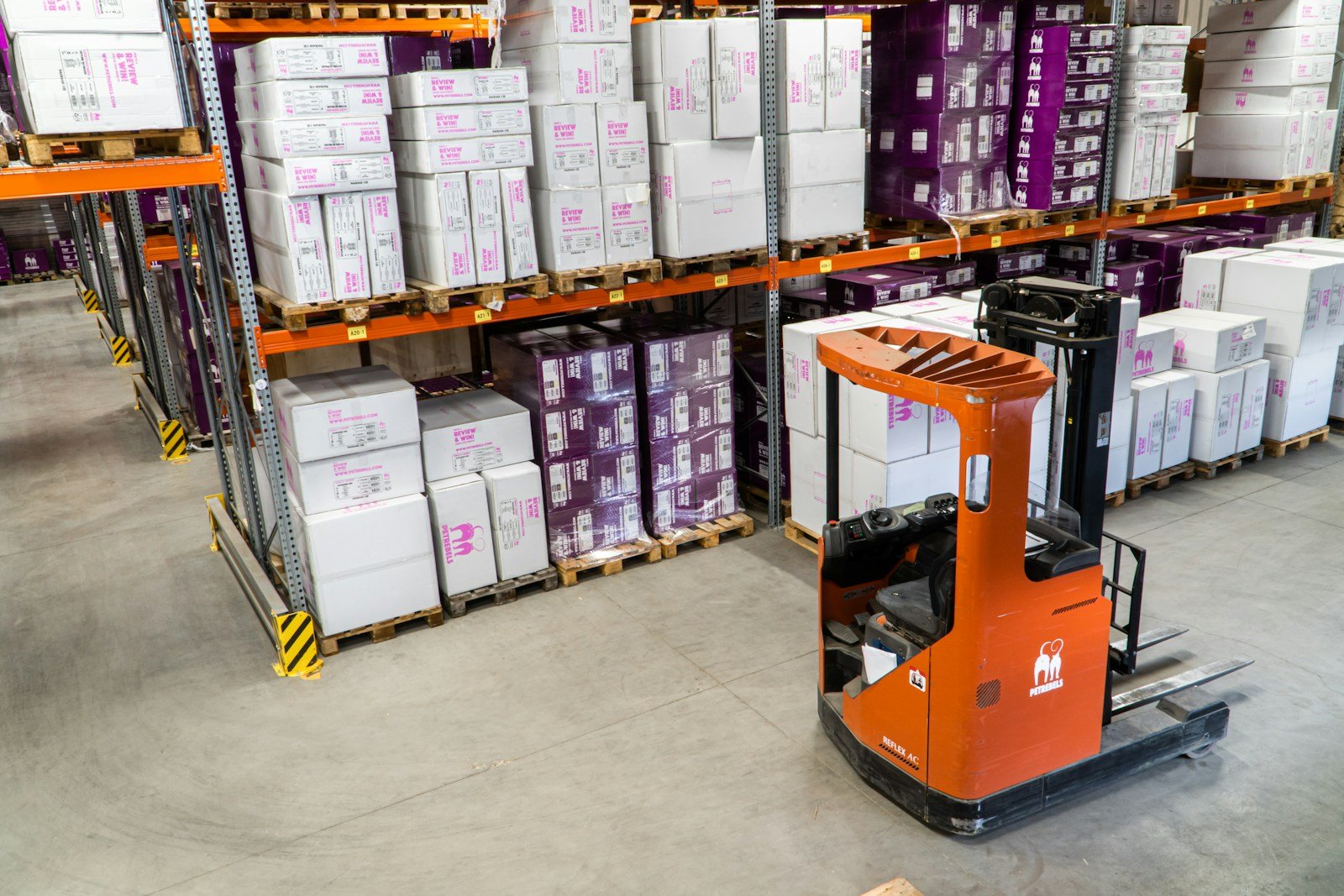Introduction
Effective inventory management is crucial for success. One strategy that has gained significant traction is Just-in-Time (JIT) inventory management. This approach revolutionizes the way businesses handle their inventory, minimizing waste and maximizing efficiency. With the ever-increasing pressure to reduce costs and enhance profitability, JIT inventory management offers a compelling solution that can transform your operations.
According to a recent study by Deloitte, companies that have successfully implemented JIT inventory management strategies have experienced a 25% reduction in inventory carrying costs and a 15% increase in overall operational efficiency. These statistics highlight the profound impact that this approach can have on a business’s bottom line.
Table of Contents
- Understanding JIT Inventory Management
- Benefits of JIT Inventory Management
- Implementing JIT Inventory Management
- Challenges and Mitigations in JIT Inventory Management
- Real-World Examples of Successful JIT Inventory Management
- Additional Resources and Further Reading
- Practical Tips for Effective JIT Inventory Management
- Conclusion
Understanding Just-in-TIme Inventory Management
JIT inventory management is a philosophy that originated in the Toyota Production System and has since been adopted by businesses across various industries. The core principle of JIT inventory management is to maintain minimal inventory levels by receiving goods only as they are needed for production or sale. This approach eliminates the need for large stockpiles of raw materials, work-in-progress, or finished goods, thereby reducing inventory carrying costs, storage space requirements, and the risk of obsolescence.
The JIT inventory management system relies on a well-coordinated supply chain and close collaboration with suppliers to ensure timely delivery of materials. By carefully synchronizing the flow of materials with production or sales schedules, businesses can maintain a lean and efficient inventory while meeting customer demand.
Benefits of Just-in-TIme Inventory Management
Implementing JIT inventory management offers numerous advantages for businesses, including:
- Reduced Inventory Carrying Costs: By minimizing inventory levels, businesses can significantly reduce the costs associated with storing, insuring, and handling excess inventory.
- Improved Cash Flow: With less capital tied up in inventory, businesses can free up working capital and improve their cash flow.
- Increased Efficiency: JIT inventory management streamlines operations by eliminating waste and promoting continuous improvement through the identification and resolution of inefficiencies.
- Enhanced Quality Control: With smaller batch sizes and frequent deliveries, defects can be detected and addressed more quickly, leading to improved product quality.
- Responsiveness to Market Changes: By maintaining agile inventory levels, businesses can more easily adapt to fluctuations in customer demand or market conditions.
Implementing Just-in-TIme Inventory Management
Implementing JIT inventory management requires careful planning and coordination across various departments within an organization. Here are the key steps involved:
- Supplier Evaluation and Selection: Identify reliable suppliers with a proven track record of delivering high-quality materials on time. Establish strong partnerships and open communication channels.
- Process Analysis and Optimization: Thoroughly analyze and streamline all processes involved in the production or delivery of goods, eliminating waste and inefficiencies.
- Demand Forecasting: Implement accurate demand forecasting techniques to anticipate customer requirements and align inventory levels accordingly.
- Employee Training and Engagement: Provide comprehensive training to employees on JIT principles and involve them in the implementation process to foster a culture of continuous improvement.
- Technology Integration: Leverage technology solutions such as Enterprise Resource Planning (ERP) systems, inventory management software, and real-time tracking tools to support JIT inventory management.
Challenges and Mitigations in JIT Inventory Management
While JIT inventory management offers substantial benefits, it also presents some challenges that must be addressed:
| Challenge | Mitigation |
|---|---|
| Supplier Reliability | Establish stringent supplier evaluation criteria, maintain backup suppliers, and implement penalties for late or defective deliveries. |
| Supply Chain Disruptions | Develop contingency plans, maintain safety stock levels for critical components, and diversify supply sources. |
| Demand Variability | Implement advanced demand forecasting techniques, monitor market trends closely, and maintain flexibility in production schedules. |
| Quality Control Issues | Implement rigorous quality assurance processes, train employees extensively, and maintain close communication with suppliers. |

Real-World Examples of Successful JIT Inventory Management
Several companies have successfully implemented JIT inventory management strategies, resulting in significant cost savings and operational improvements. Here are a few notable examples:
- Toyota: As the pioneer of the JIT inventory management system, Toyota’s implementation of the Toyota Production System has been a resounding success, enabling the company to minimize waste, reduce costs, and enhance quality.
- Dell: Dell’s direct-to-consumer model and efficient supply chain management have allowed the company to leverage JIT inventory management effectively, reducing inventory levels and improving customer satisfaction.
- Zara: The fashion retailer Zara has mastered JIT inventory management by closely monitoring consumer trends and rapidly replenishing inventory in response to changing demands, minimizing overstocks and markdowns.
Additional Resources and Further Reading
If you’re interested in learning more about JIT inventory management, here are some recommended resources:
- Lean Production: Just-in-Time Manufacturing
- Investopedia: Just-in-Time (JIT)
- YouTube: Just-in-Time Inventory Management
Frequently Asked Questions
- Q: Can JIT inventory management be applied to service industries?
A: Yes, the principles of JIT inventory management can be adapted and applied to service industries as well. Instead of physical inventory, the focus is on optimizing the delivery of services to meet customer demand while minimizing waste and inefficiencies. - Q: How does JIT inventory management differ from traditional inventory management methods?
A: Traditional inventory management methods often involve maintaining large stockpiles of inventory to buffer against demand fluctuations or supply disruptions. JIT inventory management, on the other hand, aims to minimize inventory levels by receiving materials or goods only as they are needed, relying on a well-coordinated supply chain and accurate demand forecasting.
Practical Tips for Effective JIT Inventory Management
Implementing an effective JIT inventory management strategy requires careful planning and execution. Here are some practical tips to help you succeed:
- Establish Strong Supplier Relationships: Develop close partnerships with reliable suppliers who can deliver high-quality materials or components in a timely and consistent manner. Communicate your requirements clearly and work collaboratively to ensure seamless coordination.
- Optimize Production Processes: Continuously analyze and streamline your production processes to eliminate waste, reduce lead times, and enhance efficiency. This may involve implementing lean manufacturing techniques, such as value stream mapping, 5S methodology, and kaizen (continuous improvement).
- Implement Effective Demand Forecasting: Leverage advanced demand forecasting techniques, such as time-series analysis, regression models, or machine learning algorithms, to accurately predict customer demand. This will enable you to align your inventory levels and production schedules accordingly.
- Invest in Technology and Automation: Utilize technology solutions like Enterprise Resource Planning (ERP) systems, inventory management software, and real-time tracking tools to enhance visibility, coordination, and decision-making across the supply chain.
- Train and Empower Employees: Provide comprehensive training to your employees on JIT principles, lean practices, and the importance of continuous improvement. Encourage them to identify and address inefficiencies proactively, fostering a culture of collaboration and problem-solving.
- Monitor and Measure Performance: Establish key performance indicators (KPIs) to track and measure the success of your JIT inventory management implementation. Metrics such as inventory turnover ratio, carrying costs, on-time delivery rates, and customer satisfaction can provide valuable insights for continuous improvement.
- Maintain Flexibility and Contingency Plans: While JIT inventory management aims to minimize inventory levels, it’s essential to maintain a degree of flexibility to accommodate unexpected demand spikes or supply chain disruptions. Develop contingency plans, such as maintaining safety stock levels for critical components or having backup suppliers, to mitigate potential risks.
Implementing these practical tips will help you navigate the challenges of JIT inventory management and reap its full benefits, including reduced costs, improved efficiency, and enhanced customer satisfaction.
Conclusion
Just-in-Time (JIT) inventory management is a powerful strategy that has transformed the way businesses manage their inventory and supply chains. By minimizing inventory levels and receiving materials or goods only as they are needed, companies can significantly reduce costs, improve cash flow, and enhance operational efficiency.
While implementing JIT inventory management requires a well-coordinated supply chain, reliable suppliers, and effective demand forecasting, the benefits are substantial. From reduced inventory carrying costs and storage space requirements to improved quality control and responsiveness to market changes, JIT inventory management offers a compelling solution for businesses seeking to streamline their operations and gain a competitive edge.
As you embark on your JIT inventory management journey, remember to carefully plan and execute each step, leverage technology and data-driven insights, and foster a culture of continuous improvement within your organization. Embrace the challenges as opportunities for growth and remain committed to refining your processes to achieve maximum efficiency and profitability.
The road to mastering JIT inventory management may have its hurdles, but the rewards of a lean, agile, and cost-effective supply chain make the effort worthwhile. Embrace the principles of JIT inventory management, and watch as your business transforms, gaining a competitive edge in an ever-evolving marketplace.






